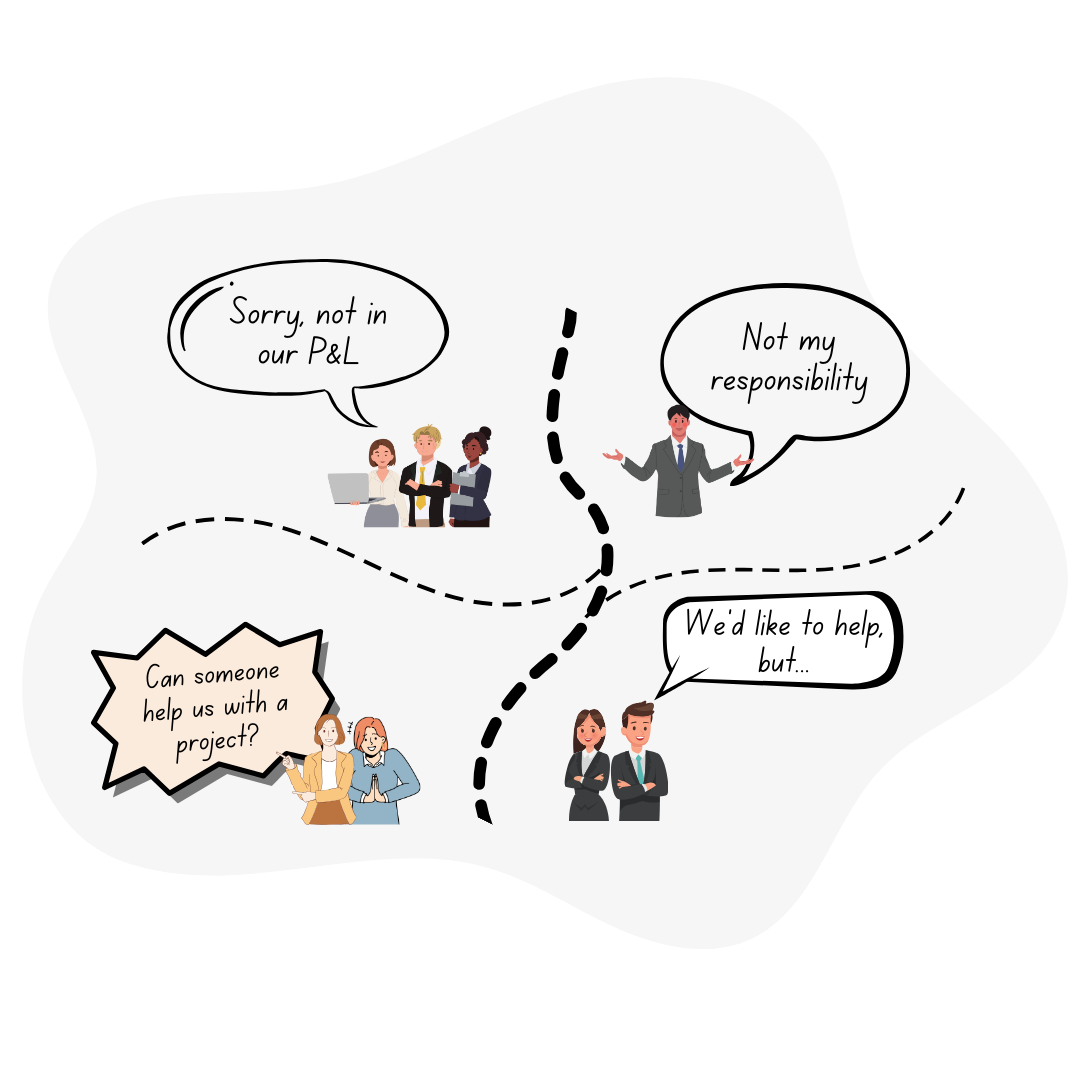The Messy Middle; Sitting with unresolved tensions
In a world that loves quick fixes, it’s hard to resist the urge to tidy things up when they feel uncomfortable. Whether at work, in leadership, or everyday conversations, most of us are driven by the instinct to sort things out fast—to resolve tension and move on. But rushing to a solution isn’t always the best approach when dealing with complex situations. Some of the most valuable insights and breakthroughs come when we stick with the messiness a little longer.
This messy middle—where things aren’t clear, and tensions are rising—is uncomfortable. But it’s also where transformation happens. So, why do we find it so hard to sit in this space? What’s going on when we rush to resolve things, and more importantly, how can we learn to stay open, even when it feels uncomfortable?
The Urge to Fix
When things get tense, we tend to feel an almost automatic urge to fix the situation. Maybe it’s a fear of conflict, or maybe it’s just a desire for clarity and control. Our nervous systems crave stability, and when we’re in a situation where the answers aren’t obvious, it’s tempting to jump to conclusions just to feel more settled.
This need for resolution is natural. We’re wired to seek out patterns, simplify the world around us, and make sense of things as quickly as possible. But when we rush to resolve, we often miss what’s really going on. We lose the opportunity to dig deeper, understand different perspectives, and come up with solutions that might be more sustainable in the long run.
Black-and-White Thinking
When we collapse into “right” and “wrong,” we often do so to protect ourselves from discomfort. It gives us a clear boundary between what’s familiar and what’s unknown. And while there’s something reassuring about thinking we’re “right,” when we focus too much on that, we cut ourselves off from the richness of exploring different angles. This need for certainty and control often prevents us from engaging fully with what’s happening in the messy middle.
Sitting in the Messy Middle: Easier Said Than Done
Of course, all of this is easier said than done. It’s one thing to talk about “staying open” or “embracing discomfort,” but doing it is hard. When tensions rise, our instinct is to react, to find closure, or to retreat into familiar ways of thinking. But if we can hang in there, if we can resist that urge to resolve things quickly, we can unlock more meaningful conversations and find richer and more thoughtful solutions.
So, how do we do it? Here are a few ways to practise staying in the messy middle:
-
Notice your reactions: When tensions rise, pay attention to how your body responds. Do you get defensive? Do you want to shut down or hurry through the conversation? Simply noticing these responses can be a good start.
-
Stay curious: When you feel the need to resolve things quickly, take a breath and ask yourself, What else could be going on here? Try to stay open to different perspectives; treat the conversation as an exploration, not a problem to solve.
-
Get comfortable with not knowing: You don’t need to have all the answers. Allowing yourself to sit with uncertainty creates room for more creative and flexible thinking. This takes practice, but the more we do it, the more resilient we become.
-
Listen deeply: When things get tense, we often stop listening. We start planning our response or thinking about how to defend our position. Real listening means staying present and hearing what’s being said without jumping to conclusions or worrying about what to say next.
-
Be willing to be wrong: One of the hardest parts of all this is letting go of the need to be right. It doesn’t mean your views don’t matter, but being open to the possibility that you might not have the whole picture can lead to a much richer conversation.
Why This Matters
Learning to stay in the messy middle matters because it’s where real change happens. In leadership, collaboration, and relationships, sitting with ambiguity allows us to make better decisions. It encourages us to see beyond our own perspectives and find deeper, more inclusive, and more sustainable solutions.
And it’s not just about making better decisions. Sitting with tension creates stronger, more trusting relationships. When we can resist the urge to “win” or resolve a conflict quickly, we create space for others to feel heard and understood. It builds empathy and mutual respect, which are the foundations of real collaboration.
This is not an easy practice. It takes time, and there will be moments when we slip back into old habits or when the discomfort feels too much. That’s okay. It’s all part of the process. Each time we practise staying in the messy middle, we get a little better at it. And in the end, it’s not about finding the “right” answer—it’s about finding better ways of working through challenges together.
- If you're interested in practising this - you might like our Collaboration in Complexity workshop - 2 hours to explore different ways of being, thinking, and relating. Join us.
.png?width=120&height=120&name=RISE%20Logo%20(7).png)
%20(1).png?width=133&height=133&name=Compass%20Coasters%20(87%20x%2087%20cm)%20(1).png)
.png)

